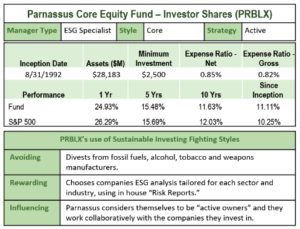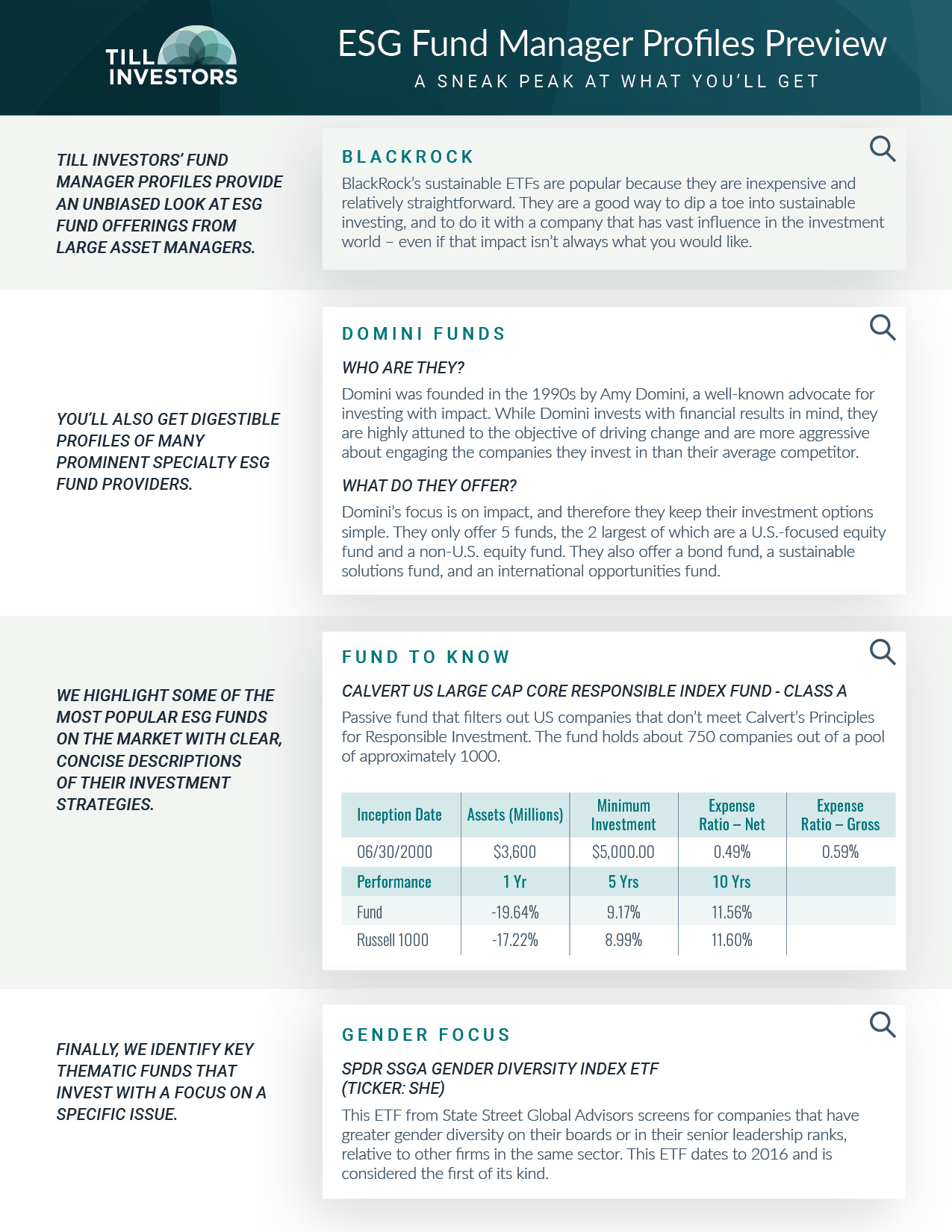Updated Fund Profiles Put Sustainable Investors on the Starting Block

“In a system that values profit above all else, every dollar you invest is a vote for (or against) your values. Do you want to vote for pollution or for the solution?” — Newday Impact Investing
This month, Ben and I have been hard at work updating our Fund Manager profiles. It’s a necessary task, and it’s also a valuable one. It’s our best opportunity to catch up with a market segment that is constantly changing and to winnow down a diverse landscape into a format that sustainable investors can easily use.
In this month’s blog, we’re going to share a few notes about how the industry is changing, how our profiles are adapting, and how and where investors can access the information they need to get started.
V2.0
We originally developed the profiles as part of our book, which was published in 2023. The book was our attempt to talk about how sustainable investing differs from traditional investing and how to express your values through your investments. But we didn’t feel the script was complete without telling people what we know about the landscape for sustainable mutual funds and ETFs.
Our initial focus in the profiles was on fund companies – ie, how does a sustainable specialist like Parnassus differ from a traditional fund provider like Vanguard? How do passive sustainable funds – like those that come from iShares – approach sustainability differently from active funds like those from Calvert? We gave fund examples, but our primary focus was to clarify what kind of sustainability approach you could expect from the fund sponsors.
In version 2.0, we’re pivoting a bit. The fund company information is still there, but what investors really need to know is how to find a manageable set of funds that fits what they are looking for. As in, if I care about X, what funds should I start with?
There are hundreds of sustainable funds, and it’s not our mission to be completist. We think it’s smart to focus our energies on funds that provide something unique or valuable to investors. Nearly all the funds we chose for this update are on the list of largest and longer-lived sustainable funds, because we think it’s fair to focus on funds with established track records. We were also drawn to funds that offered a unique or differentiated strategy, such as the VanEck Environmental Services ETF.
We have come to believe that sustainable investors need three pieces of information to make a good decision about an investment.
- What issues do you care most about (or, do you care most about having sustainable standards for all companies)?
- Where should this fund fit in your investment portfolio?
- What is your preferred fighting style?
(You can find out more about fighting styles here.)
With this in mind, we designed our profiles to highlight this information for the funds we selected.

You can gauge the fund’s core issues through its name. The profile will also tell you whether the fund is “core”, “higher risk”, or “thematic”, which will tell you whether it would work as a central holding with a large percentage of your assets, or if it’s more of an enhancement to an already diversified portfolio. Finally, we provide information about the fund’s fighting style.
Once you have a sense for whether an individual fund is of interest to you, you can compare expenses and performance, read the fund’s marketing material online, or bounce out to a traditional fund review site like Morningstar if you want more detailed information.
A Few Takeaways
Growth stocks have led the market this year by a large margin, so funds that focus on growth have had excellent short-term returns. That has benefited many sustainable funds. But remember – ESG is a long-term game, and we will always advise focusing on longer-term numbers.
A few other thoughts during this round of updates:
- New sustainable fund growth slowed last year, likely a result of a weak market in 2022, political backlash, or both.
- However, the vast majority of funds in our profiles saw investment inflows over the past year. While the news has mostly focused on outflows, particularly from a few large funds, the trend does not seem to have affected the wider sustainable fund marketplace.
- An increasing number of sustainable funds are finally beginning to have 3-, 5-, or even 10-year records. This is excellent news, since it gives investors more data to compare and more confidence in sustainable strategies.
- Sustainable “target date” retirement funds are becoming more available. This is a compelling trend because most people invest through their retirement plans and target date funds are extremely popular. Of course, they are new and thus have much of a track record—yet.
Where Can You Find Them?
Till Investor Fund Profiles are always available on our website for a small fee. We’ve also entered into an agreement with Equities.com to include the profiles content as part of their sustainable investor quiz, which will be available later this year at no cost.
Finally, we will be sharing excerpts from the Profiles in our newsletter and social media posts throughout the year. You can gain access to those by signing up for our newsletter at https://tillinvestors.com/reach-out. It won’t cost you a thing.


